|
===================================================
How To Break 80 Newsletter
March 14, 2007
"The Web's Most Popular Golf Improvement Newsletter"
===================================================
In this issue we'll discuss...
1) Power Tip: Don't Get Wristy
2) How To Take A Golf Lesson
3) Question of the Week- Hitting the 3-Wood
4) Article- What Your Finish Position Can Reveal About Your Swing Flaws (Part I)
5) Article- Ben Hogan's Secret
===================================================
1) Power Tip: Don't Get Wristy
===================================================
Among the biggest mistakes weekend golfers make is getting too wristy or handsy on the tee. A wrist- or hand-dominated motion helps in some golf situations, like when a less-than-perfect lie around the green requires a conscious manipulation of the clubhead. But getting too wristy or handsy while on the tee often spells trouble.
Some weekend golfers let the "hitting instinct" take over when they're on the tee. The hitting instinct is the idea that generating maximum distance off the tee requires us to supply all the power with our hands and arms. Instead of letting the club do the work, we try to "muscle" the ball out there. Usually, we end up hitting the ball either out of bounds or behind some trees.
Here are 7 keys to generating power off the tee:
- Ignore the hitting instinct
- Use a one-piece takeaway
- Keep the hands/wrists quiet
- Take a full shoulder turn
- Use the big muscles of the legs
- Let the club do the work
- Think faster, not stronger
First, ignore the hitting instinct, especially in the backswing. Instead, take the club away with a one-piece motion, as I've often said, and use a full shoulder turn. Let the big muscles in the legs and torso control the swing. Only when the golf club reaches waist high should your wrists begin to hinge.
Second, keep your hands and wrists quiet. That's especially true in the beginning of the downswing, which is triggered by a weight shift and a turn toward the left. Use your arms and hands only after you've started your downward motion-a move dictated more or less by gravity. That's when you can attempt to create acceleration with the arms and wrists.
Third, think faster not stronger. As the clubhead comes into the ball-defined as "pre-impact"-the sensation of the hands and arms should be that of cracking a whip or hitting a shot with a tennis racquet. In other words, stay relaxed and loose, and don't try to force anything. More relaxed arms and legs means more power and distance.
Next time you're on the tee, change your thinking. Ignore the hitting instinct and let the club do the work. You'll be amazed at how far you can hit the ball by staying relaxed and using a nice easy swing.
=================================================== 2)
How To Take A Golf Lesson
===================================================
If you've ever taken golf lessons, you know that achieving successful results begins and ends with the student. A good instructor can only do so much. The student must contribute something as well, if he or she wants to improve. So the first step in becoming a better golfer is becoming a better student. How do you do that?
Here are 6 tips on becoming a better student:
- Arrive early to the session
- Do some stretching or warm-ups
- Start with some wedge shots
- Take a notebook
- Leave all your stress behind
- Banish all preconceived notions
Arrive early, so you can stretch before taking a lesson. Some people stretch before the lesson. That's fine. Just make sure that it doesn't make you late. And make sure the stretches are appropriate for golf. Also, inform your teacher of your golf history before taking your first lesson. Tell him or her what you have trouble with-short game, driving, putting.
Once you're stretched out, hit some balls. Select a wedge, choose a target, and hit for it. Hit several shots at the target before hitting an 8- or a 7- iron. Keep going down the list until you get to the driver. You don't have to hit every club in the bag, just one club from every grouping. That way you get a feel for each of the different types of clubs before taking the lesson.
During the lesson, listen to what the teacher says. Be open to new ideas. Your teacher may say something that sounds weird or asks you to do something that feels strange. If he or she does, there's a reason for doing so, so give it your best shot. After all, he or she has probably been teaching for years and knows a lot more about the game than you do.
Finally, take a notebook with you so you can write down key points you want to remember. Remember, it takes time to unlearn bad habits and learn new ones. So don't give up. Maintain a positive attitude throughout the lesson. Follow these tips and you'll get the most out of every golf lesson you take.
=================================================== 3)
Question of the Week- Hitting the 3-Wood
===================================================
From Karunish Bal
Hitting the 3-Wood
Q. Hi, Jack. I enjoy reading your newsletter. I am unable to hit a 3-wood cleanly. Please give me some tips for using this club to its full potential.
A. Thanks for the question, Karunish. The 3-wood is highly versatile. One of its best uses is on the fairway, especially on long par 4s and par 5s. You can also use it in the rough, if you can see most of the back of the ball.
Here are some tips for hitting the 3-wood.
1. Position the ball inside your front heal
2. Put your hands slightly in front of the ball
3. Keep the club low on the takeaway and through impact
4. Swing with the same tempo as the 7-iron
5. Keep your head steady throughout the swing
One of the keys to hitting a 3-wood is extending your arms away from the target on the takeaway. Keep them extended right on through to the follow-through.
Extending your arms creates the wider arc you need to hit this club successfully. Also, your swing should be more of a sweeping motion, than down and through, as with an iron.
To learn to hit the 3-wood well, place a tee about six inches in front of the ball. When you swing, use the tee as a reference point as you extend the club through the ball towards the tee.
If you've got a golf question you'd like answered, send an email to us at
questions@howtobreak80.com and we'll review it. I can't guarantee that we'll use it but if we do, we'll make sure to include your name and where you're from.
===================================================
If you want to truly discover the secrets of shooting like the Pros and creating a more reliable and consistent swing, check out:
http://www.HowToBreak80.com
P.S. Feel free to share this newsletter with family and friends. If you
would like to subscribe to this newsletter, send a blank email to
break80ezine@aweber.com
===================================================
About the Author
===================================================
Jack Moorehouse is the author of the best-selling book
"How To Break 80 and Shoot Like the Pros!". He is NOT a golf pro, rather a working man that has helped thousands of golfers from all seven continents lower their handicaps quickly. His free weekly newsletter goes out to thousands of golfers worldwide and provides the latest golf tips, strategies, techniques and instruction on how to improve your golf game.
|
Tools To
Help Your Game!
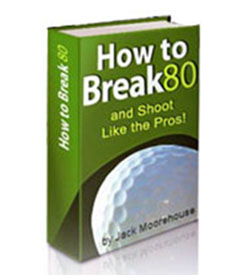
eBook
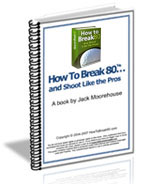
Physical Book
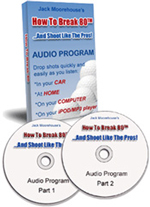
Audio Program
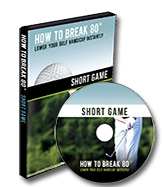
Short Game DVD
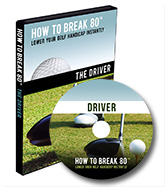
Driver DVD
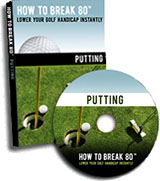
|